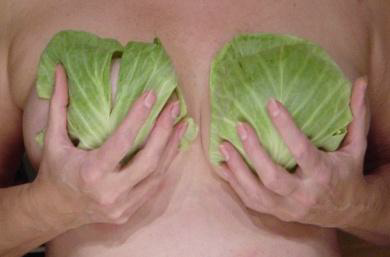Engorgement sucks. So what is breast engorgement and how do you relieve breast engorgement when you are breastfeeding a newborn? Basically, it’s breastfeeding welcoming you to the party, waving streamers, and holding balloons. Except it’s a surprise party. Engorgement is when the breasts are swollen, full and hard, babies struggle to latch. It is caused by the increase of milk as the milk starts to come in. It also increased blood flow and extra fluids in the breast tissue.
What’s The Problem With Engorgement?
Engorgement can cause all kinds of problems. If the breasts become too swollen and hard, plugs can form in the milk ducts. This can also lead to mastitis, a breast infection. Although mastitis is treatable, it comes with flu-like symptoms. Who needs that after having a baby? In addition, if the breasts become too full and congested, this can cause milk to start the process of drying up. Full breasts can make it harder for new babies to learn how to latch, and new mothers may find themselves with cracked or damaged nipples.
What To Avoid When Feeling Engorged
It may be tempting but try not to pump during this time. Pumping (in addition to feeding every 1.5-3 hours) can cause an oversupply of milk. Basically, you will be telling your body to make more milk, instead of adjusting the supply. This may make breast engorgement worse. Pumping can also pull more fluid to the areola, causing more latch problems.
Skipping Feeds Makes Engorgement Worse
Try to avoid skipping feedings. It might be tempting if someone offers to feed the baby so you can sleep a little longer, but this will make the engorgement worse. Not to mention increasing the risk of plugged milk ducts and mastitis. Keep the baby close and remember, the more frequently the baby feeds, the more comfortable you will be.
Does Excessive Heat Help Engorgement?
As mentioned, warm compresses before feedings can be helpful, but heat between feedings may cause more swelling. Try to stick with cold after the feeding and warm compresses right before or during, only to get the milk flowing.
Can You Skip Past Engorgement?
Is there any avoiding engorgement? Yes. After you have your baby, the milk-making process begins. Most parents begin to feel more full around day 3 or 4 postpartum. This is the milk coming in, increased blood flow, and extra fluid in the breast tissue. If you don’t do anything at all, your breasts might feel like 2 hard rocks on your chest and this is painful. You will be looking for ways to ease the engorgement. If you are able to start breastfeeding after delivery and continue to latch the baby regularly throughout the first couple of days, this process is manageable. Your body will adapt to the transition easier. If you are not breastfeeding frequently from the start, you will probably feel more engorged as the milk starts to come in.
More Babies = More Milk

A couple of other pieces to the puzzle are as follows. If this is not your first baby, you may feel more full regardless. More milk comes with more babies, and you may feel way more uncomfortable with milk coming in than you did with your first baby, that’s ok. Your body will adjust. Continue to latch your baby frequently, and this will help you stay comfortable.
Additional Fluid = Engorgement And Swelling
Additional fluids during labor can also add to the swelling in the breast tissue, which will make the engorgement feel worse. Swollen breast tissue just adds to the fullness. It’s easy to tell if you have swollen breast tissue. If your feet are swollen a few days after delivery (or hands, etc.) your breast tissue is likely swollen, too. Read on for some ways to help relieve breast engorgement.
Ice Or Heat For Engorgement?
Applying ice packs, frozen bags of vegetables or a giant bag of ice on the breasts after feeds can really help with comfort. Remember, a lot of the engorgement is swelling, and ice will give your body the message to ease up on the fluids. Just like you would put ice on a swollen ankle, it works the same with swollen breast tissue. Heat packs right before or during the feeding can relieve breast engorgement and help milk to flow easier. This is a good practice if you are feeling very full and the breasts are hard. Congested milk ducts have a difficult time opening up and letting the milk down, and the heat will help with that.
Frequent Feeds Helps Ease Engorgement
Feed your baby as frequently as possible. Engorgement can be uncomfortable, and full breasts can make it very hard for a baby to latch. This may lead to cracked or sore nipples. Frequent feeds will keep the milk flowing, and it’s less likely you will experience difficulty with latch. Make sure you are feeding the baby at least every 1.5-3 hours. You can wake the baby if they seem to be extra sleepy and not waking for feeds on their own yet. Ice the breasts for about 15 minutes after each feeding to keep the fluids to a minimum.
Cabbage Leaves For Engorgement?
Ok, this one may sound strange, like an old wives’ tale. Cold cabbage leaves on the breast during engorgement have been known to bring comfort and relieve breast engorgement. The evidence behind this is conflicting, and some studies have not found much difference between cold cabbage leaves and basic cold packs. However, cabbage is known to have anti-inflammatory properties which can help provide comfort to some during engorgement. Don’t believe me? Check out the science behind it here – international journal of nursing studies.

Breast Massage To Relieve Engorgement
Massaging the breasts before feeding can help get the fluid moving a bit faster, and bring relief from the engorgement. Start at the top of the breast and work towards the areola. Make sure you work around the whole breast. There are milk ducts all throughout the breast, and you want to massage as much of that as you can. If the breasts are really swollen, you can lay flat on your back with your feet elevated. This will help some of that additional fluid get reabsorbed by the lymph system. Watch how you can do effective breast massage here – how to prevent and relieve engorged breasts

Engorgement And Reverse Pressure Softening
Reverse pressure softening is a technique used to help soften the area around the nipple and areola. This happens by gently applying pressure which moves fluid from the base of the nipple and areola back into the breast. This is a helpful tool that can really aid in relieving engorgement and achieving a comfortable latch. You can read full directions on how to do this here- reverse pressure softening.
Drinking Fluids Helps With Engorgement
It may sound counter-productive but drinking fluids can really help flush some of the fluid out of your system. You don’t have to over-do it, just enough to stay hydrated and keep things moving.
The important thing to remember is engorgement is a temporary bump in the road. The best way to relieve breast engorgement is to feed the baby frequently, do your best to stay comfortable, and call a lactation consultant if you are having any trouble with feedings.



